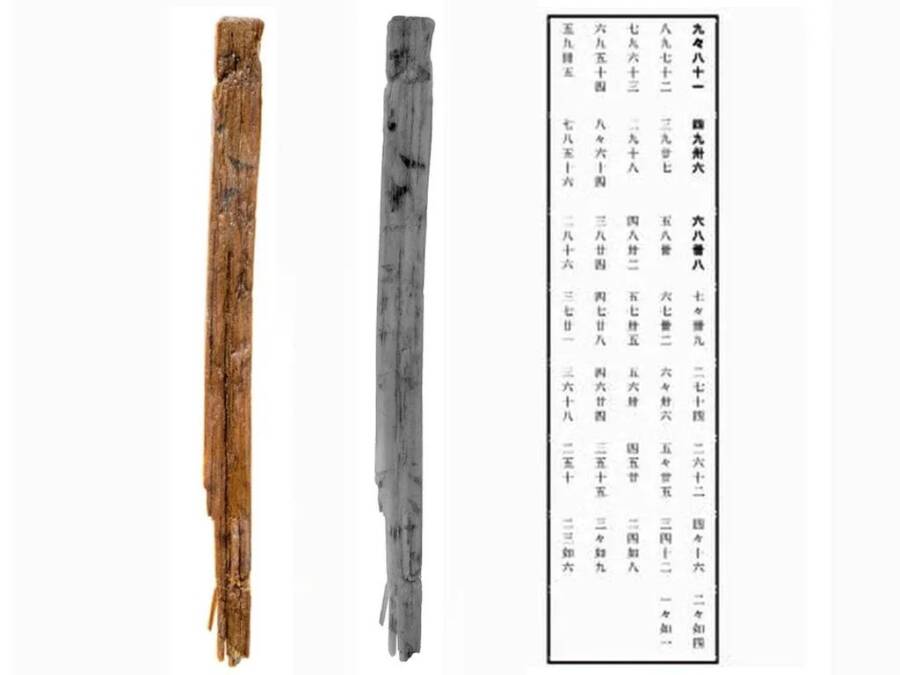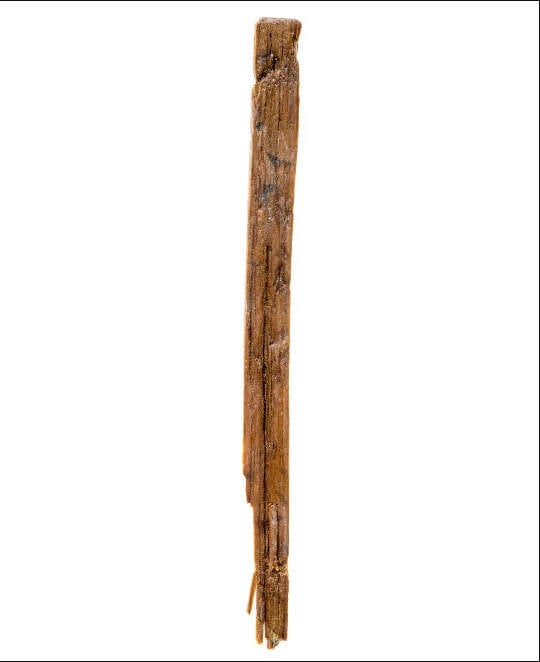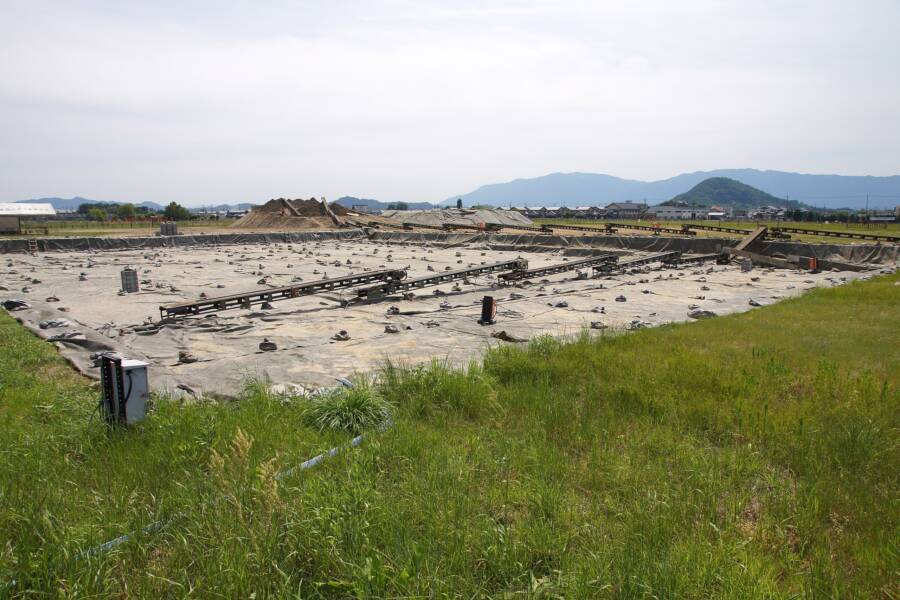The strip of wood was found in the ancient capital of Fujiwara-kyō and was likely part of a larger multiplication table used by a government official to calculate things like taxes.

Nara National Research Institute for Cultural PropertiesResearchers originally believed that the strip of wood belonged to a practice tablet, but it’s actually a piece of a 1,300-year-old multiplication table.
As far as archaeological discoveries go, the strip of wood found in Fujiwara-kyō, Japan, originally didn’t look like much. But on second glance — and with the help of infrared light — researchers discovered that it was actually part of a 1,300-year-old multiplication table.
What’s more, the strip of wood may represent the oldest multiplication table ever found in Japan. It was likely used by a government official, who would have been expected to know basic math.
Discovering The Multiplication Table In Japan
The strip of wood, which was examined by the Nara National Research Institute for Cultural Properties, was first discovered in 2001 in Fujiwara-kyō, the capital city of imperial Japan between 694 and 710 C.E. Though it may not look like much, researchers determined that it was actually part of a multiplication table carefully carved with several simple equations.

Nara National Research Institute for Cultural PropertiesThe wooden strip appears to be a piece of a larger multiplication table.
Researchers discovered the strip — which is roughly six inches long and half an inch wide — in what was probably once the office of an “Emon-fu” guard, a bureaucrat with security and administrative duties. After studying the strip under infrared light, they were able to determine that it contained equations such as: “9 x 9 = 81,” “4 x 9 = 36,” and ” “6 x 8 = 48.”
The equations on the wooden strip are written in kanji, or Chinese characters, and they seem to be a part of a larger multiplication table.
“If the multiplication table was whole, the wooden tablet would measure 33 centimeters [nearly 13 inches] in length with all the equations written out,” Kuniya Kuwata, a senior researcher at Nara National Research Institute for Cultural Properties, explained. Kuwata continued: “I initially thought Japanese multiplication charts only had two to three equations per line, so I was genuinely surprised to find one with so many, similar to those in China and Korea.”
Indeed, some mysteries about the strip of wood remain.
The Curious Design Of The Multiplication Table
In many ways, the multiplication table found in Fujiwara-kyō stands apart from similar artifacts. It’s arranged from right to left, with five rows of equations written in a downward direction from the top. (It was probably the upper right-hand corner of a larger table.) However, as Kuwata noted, similar multiplication tables found in Japan had only two to three rows.
Multiplication tables with five rows are more similar to relics dating to China’s Qin and Han dynasties, which spanned from the third century B.C.E. until the third century C.E. Though this table seems to have come from the seventh century, researchers believe that it’s possible it was created during Japan’s Kofun period, which lasted from the third to the seventh century.
So, how was it used?

663highland/Wikimedia CommonsThe ruins of Fujiwara-kyō, the former imperial capital of Japan.
Emon-fu officers would have used multiplication tables for administrative purposes. They might have needed such equations to calculate taxes or to organize work schedules for government officials. However, given that this tablet could predate Fujiwara-kyō’s period as Japan’s capital, it’s also possible that it had another purpose: Researchers have speculated that the table was used to calculate the dimensions of burial mounds.
Whatever it was used for, the 1,300-year-old multiplication table found in Japan stands as a remarkable find. It speaks both to the practical use of math and the duties of centuries-old bureaucrats.
After reading about the 1,300-year-old strip of wood that turned out to be a Japanese multiplication table, look through these photos of traditional Japanese erotic art known as shunga. Or, go inside the rise and fall of the Japanese empire.





